One of our regular magazine contributors sent me this email this week:
An awful thing happened this weekend here in Plainfield. I was walking in the fields near my house with my little dog Henry and he stepped on a coyote leg trap. It was just awful, awful, awful. I couldn’t get it open, and I had to leave him there howling to try and find someone to help me. What I found was that – almost across the board – people have no idea how to open a leg trap . . . I finally located the farmer down the road who came and released Henry while I and others held him...I know the issue of trapping is a political football, but I think it would be valuable for people to be schooled in how to release [a pet].
As I read it, I winced empathetically for the dog and my co-worker/friend; thankfully Henry has fully recovered. As someone who works for an organization that seeks to bridge the divide between hunters and trappers and hikers and dog-walkers, the story also made me wince generally. These types of incidents, while rare, are good for no one. Our contributor noted that the area she was walking in could be considered rural suburbia, which is usually where something like this happens. The more fragmented the landscape becomes, the harder it is to secure trapping permission and good places to walk the dog; as a result, trappers and dog-walkers get concentrated in the same area, and these types of incidents occasionally pop up.
Here are a few things that dog owners who don’t trap should know about releasing a pet from a foot trap, and a few tidbits that land trappers should know about proper trapping gear.
- As a general rule, land trapping is allowed from mid-October through December in most states, though some states do have slightly longer seasons for some species. You can find exact dates by visiting your state’s fish and wildlife website and searching “trapping seasons.”
- It is illegal everywhere, as far as I can tell, to set traps on private land without the landowner’s permission. If you find a trap on your land and you didn’t give someone permission to put it there, call the game warden. But the flip side of this coin, of course, is that if you’re walking your dog on land you don’t own, you might encounter a legally set trap. In this case, it’s illegal for you to disturb it.
- You don’t have to worry about your personal safety. A typical canine trap has a 5- to 6-inch jaw spread; if you stepped directly on it, your foot would bridge it; you’d hear a click and feel the dirt shift subtly underneath you, if you felt or heard anything at all. Even if you walked on tiptoes into the trap, it would spring harmlessly on your boot. Modern traps don’t have sharpened teeth – those only exist in cartoons. The human-sized bear traps you see on restaurant walls are both illegal and obsolete – you’re not going to find one set in the woods.
- If your dog gets caught in a trap they’ll likely panic at first; it’s important that you stay calm and remember that in all likelihood no significant injury will occur. When biologists capture furbearers to collar and release them, they often use the same style traps that trappers use. The jaws are designed to hold, not crush or lacerate. If injury does occur, it’s almost always as the animal fights the trap. Because of this, modern traps have chains that feature inline springs that will cushion the animal’s lunging and swivel points that will allow for a full range of motion. If you’re a trapper reading this and you don’t have a spring in your chain and at least three swivel points, add them. If you’re not sure how, YouTube it. Canine trappers should also use the right amount of pan tension on their traps; for coyotes, use around four pounds. (That’s roughly the weight of a half-gallon of milk.) Having the right amount of pan tension may keep small dogs and cats out of your sets (and the small opossums and skunks you don’t want to catch anyway). Your catch rate on your fingers will go down, and your catch rate on the coyotes you’re targeting will go up significantly. Don’t listen to the old-timer down the road who tells you that you want a hair trigger. He’s wrong.
- The majority of canine trappers use coilspring-style traps – see the pictures below. You open a coilspring by pulling down on the two levers on either side of the jaws. You should be able to accomplish this by putting your thumbs on the base of the trap, your fingers on the levers, and squeezing down. If you don’t have the finger strength, use your feet to step down on the levers. Two other trap styles you could possibly come across are “jump”-style traps, which are essentially coilsprings with only one lever, and “longspring” traps that you open by compressing the curved springs. Again, see pictures below.
- Opening a trap is relatively simple; what makes the job challenging is managing the frightened dog as you do it. Use your coat, or a sweater, to restrain the dog, taking care to avoid getting bitten. Two people will make the job easier, as one can restrain the dog while the other opens the trap. If it’s just you, cover the dog, pin him or her down with your body, and release the springs. If this isn’t possible, plan B would involve finding an appropriately sized forked limb that could be used to pin the dog down. Use your body’s weight and leverage to keep pressure on the limb while reaching down to manipulate the trap levers.
That’s the nitty gritty, offered in the spirit of public service and increased awareness.


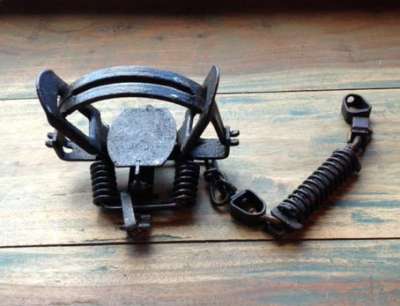
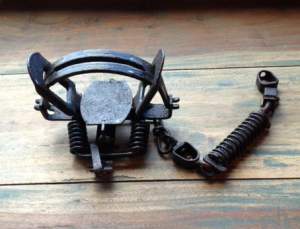
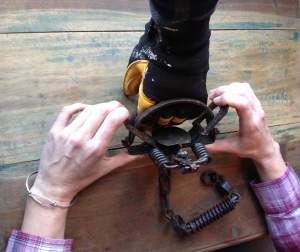
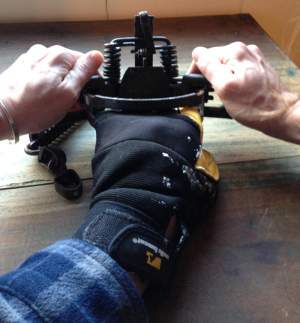
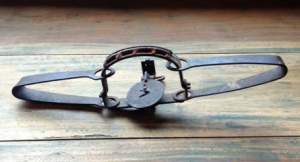
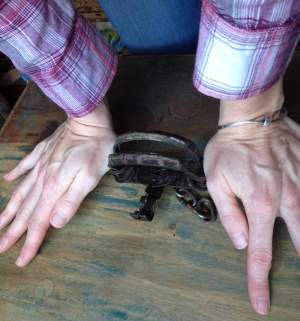
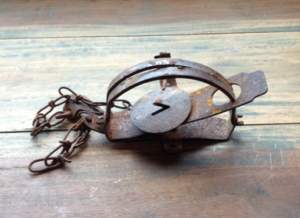
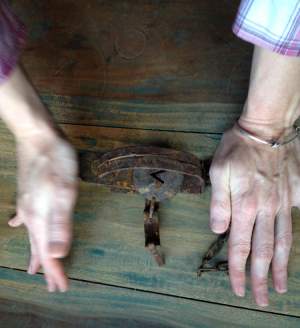
Discussion *